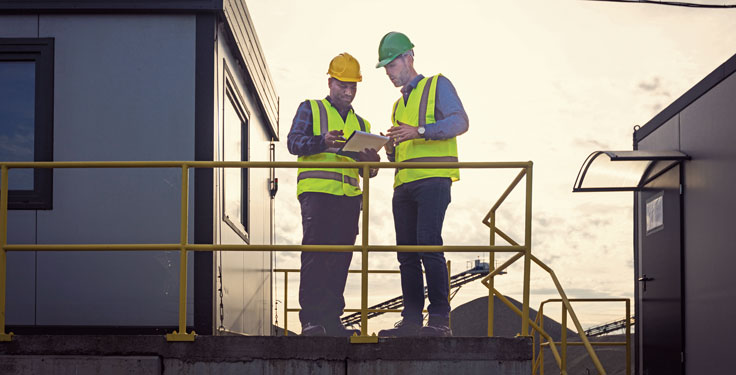Moving pains
Even tiny improvements when moving a portable plant can boost your bottom line.
One of the first things we learn in this business is when it comes to operating a processing system, production is good and downtime is bad. But do we fully understand why?
Keeping a portable processing plant up and running means more than just putting material on the ground to meet whatever demand or deadline exists. The portable plant operation is faced with the same challenges as any other business in the current economic environment. To maintain a competitive edge and remain profitable, it is critical to learn how and where to identify waste within an operation, and more importantly, how to reduce or eliminate wasteful activities.
Let’s consider a simple example. The task of cleaning the barnacles off the bottom of a cruise ship in no way provides a more memorable experience for the tourist sleeping in the stateroom. This task is, however, essential for the vessel to remain seaworthy.
Using this mindset, I am sure if you look around your workstation or organization you can quickly and easily identify such “barnacles,” which are necessary yet add no value to the product or service of the business itself. Such examples might include pressure washing the equipment, changing crusher liners and screen media, or cribbing a plant. While these tasks are critical in their own right, they add no value to the consumer of the material the plant will be producing.
Quantifying costs
Unfortunately, functions of non-value activity like these incur a real cost that must be built into the price and absorbed by customers. Employees are still incurring wages, and trucks and loaders are still consuming fuel. Therefore, a simple mindset to adopt is this: When the plant is not running, it is bleeding money.
You can probably see where I’m going with this. Production is the economic sponge that absorbs all of the costs of operating the plant.
Let’s consider some numbers from an old buddy of mine who moves a portable crushing and screening plant capable of producing about 300 tph. This plant requires 18 loads to haul, including conveyors, loaders and other components. My buddy normally relocates his plant 10 times per year, and it requires his crew of four guys one week to tear down, move and set up the plant between locations. Therefore, he is actually running the plant about 1,680 hours per year. This allows him to produce 504,000 tons annually.
For each move, his trucking costs run about $24,000 and his labor costs about $8,000. In addition, he has to rent a crane that costs him another $2,000. Therefore, the total cost just to relocate his portable plant is $34,000 – or $340,000 per year.
Put another way, it is costing my friend an additional 67 cents per ton just to absorb the annual relocation expenses.
Of course, the real pain comes in the form of his lost production. As stated earlier, the plant is capable of processing 300 tph and it requires an average of five days to relocate the plant. Because the plant is normally working eight-hour shifts, at 300 tph the lost production for each move is 12,000 tons. If that material is worth $7 per ton, the lost revenue is $84,000 per move, or $840,000 per year.
The solution? Identify methods to reduce the amount of time between moves to capture some of the lost production, thereby reducing the cost per ton and the amount of waste.
In my friend’s case, he was able to eliminate 16 hours of downtime per move – or 160 hours per year – just by upgrading his plants to be equipped with hydraulic stabilizers to jettison the cribbing process. This reduced his indirect labor costs by $32,000 per year, while adding 48,000 tons of production. He also eliminated the need to rent a crane for each move, which saved him an additional $20,000 per year in rental costs.
My friend reduced his total annual relocation costs from $340,000 to $288,000, while increasing his annual production total to 552,000 tons. The arithmetic shows that he reduced his transportation costs from 68 cents to 52 cents per ton, which is more than a 23 percent reduction.
He also increased his annual revenues by $336,000. Most importantly, he is providing a safer working environment for his crew by eliminating the cribbing timbers, the slings and the chains.
While it might not be realistic to eliminate waste completely from your operation, there will always be opportunities for small, incremental improvements that can add to the bottom line. All that is required is a desire to find and remove the barnacles.
Take note
Identify methods to reduce the amount of time between moves to capture some of the lost production, thereby reducing the cost per ton and the amount of waste.
Paul Smith is a product development manager at KPI-JCI and Astec Mobile Screens. He can be reached at paulsmith@kpijci.com.









